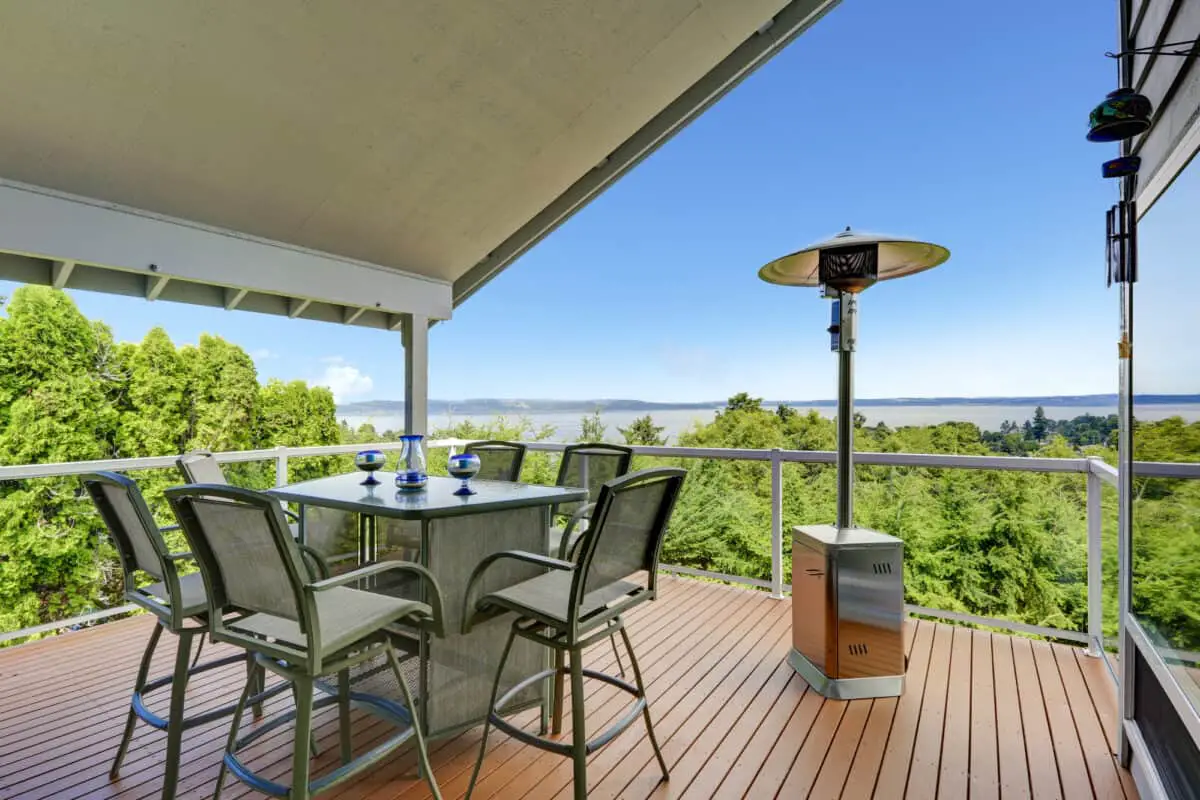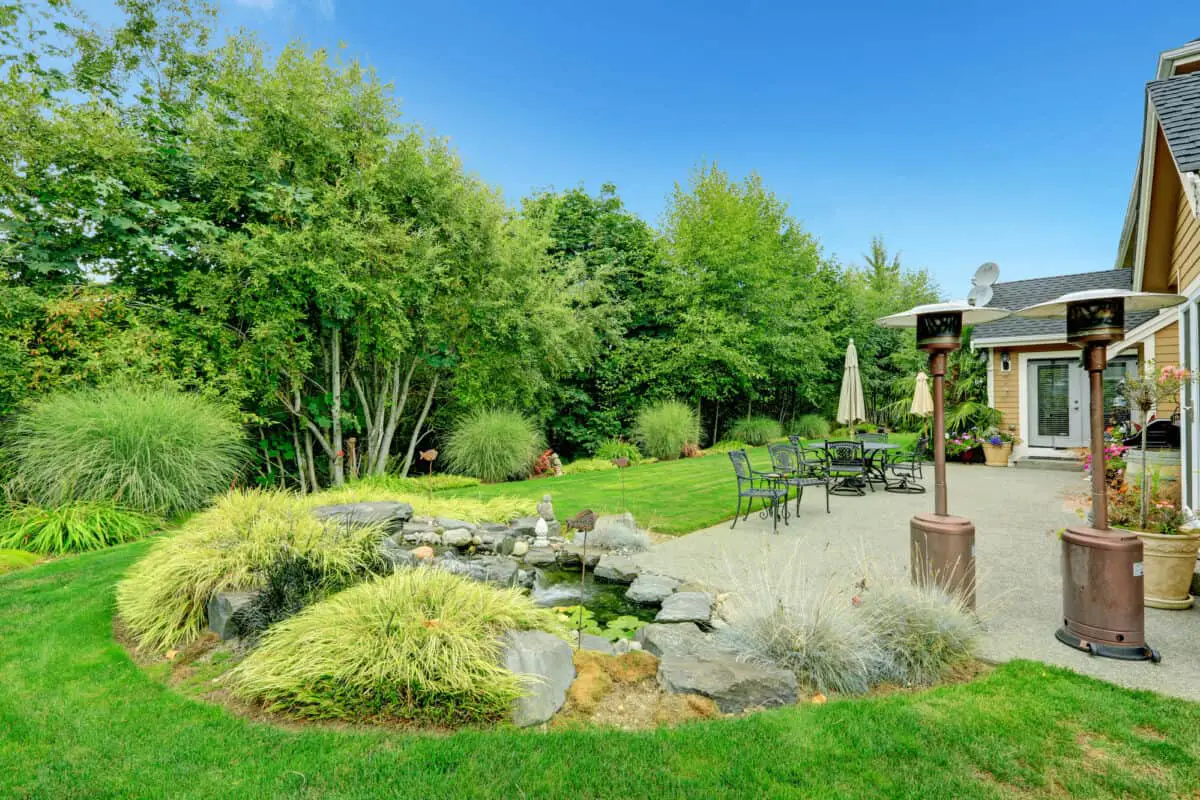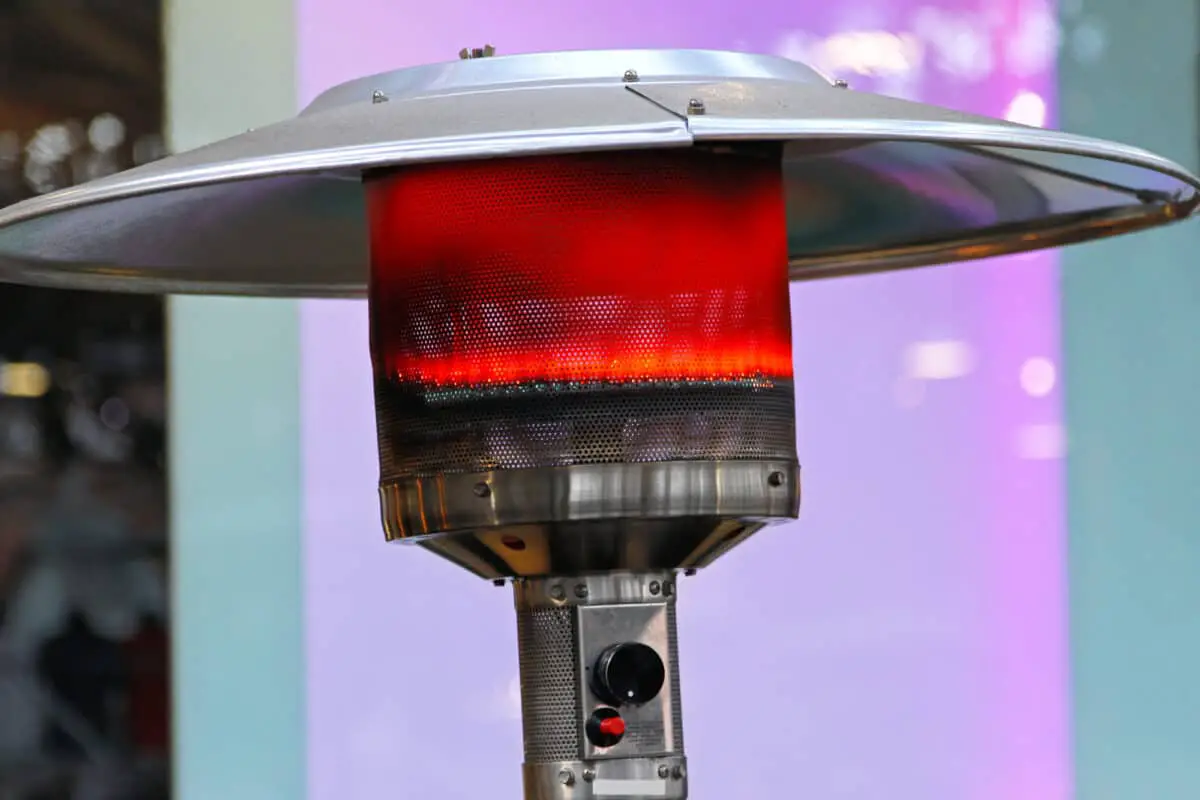A patio heater is a must-have item for the cooler seasons, but can you use a heater under a covered patio?
Absolutely! It is possible to utilize a patio heater under a covered patio, provided that the heater is suitable for the purpose and fits comfortably within the patio’s dimensions.
For indoor lighting, heaters are a safer option than fire pits; however, it’s important to note that each type of heater requires a specific amount of clearance.
During the colder months, using an alternative to fire can be a great option for utilizing the outdoor living spaces of a house, restaurant, or office such as patios, balconies, and lawns.
This allows people to comfortably enjoy the outdoors even in colder weather.
But one recurring question about patio heaters is if they can be used under a covered patio.
This article delves into the topic of patio heaters and provides useful tips on how to maximize their effectiveness when used under a covered patio.

Related Reading: Can I Shorten My Patio Heater? [ANSWERED]
Table of Contents
Types of Patio Heaters
The possibility of using a patio heater under a covered patio is determined by the specific type of heater and the size of the patio.
Patio heaters typically aren’t waterproof, as consistent exposure to the elements will speed up wear and tear.
Thanks to advancements in design and engineering, many patio heaters can now be safely used even under a covered patio.
Now, we will examine three distinct categories of patio heaters and evaluate how well they perform when placed on a covered patio.
Protecting your patio heater from rain and other elements is effortless with the use of a cover.
This simple solution eliminates the need to move your patio heater around and ensures its longevity.
Fixed Outdoor Mushroom Heaters (Natural Gas)
Mushroom-style heaters are a highly sought-after option for outdoor heating.
They not only boast a trendy design but also excel in uniformly spreading warmth.
There are basically two types of these heaters: portable types and fixed types. Let us first look at the fixed type.
Mushroom-style heaters utilize infrared heat technology to evenly distribute warmth, which eliminates the risk of exposure to open flames.
As a result, they can be safely used as a heat source under a covered patio.
This is why they can safely be used as long as there is a minimum of 2 feet of clearance between the heater and the patio’s roof.
Considering the average height of these heaters, you would need a roof at least 10 feet high to ensure proper clearance.
When installing these heaters, it’s important to keep in mind that they are permanently connected to your gas lines and cannot be moved once installed.
Therefore, it’s recommended to install them along the perimeter of the patio for maximum efficiency.
It would also be a good idea to maintain a distance of at least 6 feet between these heaters and any combustible material like wood or lattice.
Related Reading: How to Choose a Patio Heater

Portable Mushroom Heaters (Propane)
These patio heaters are among the most common and popular types available.
Like the fixed mushroom heaters mentioned earlier, they provide excellent warmth.
However, the added benefit of portability makes them a more convenient option for use under a covered patio.
Propane tanks for patio heaters can last quite a while as well.
When using a portable mushroom heater on your patio, it’s important to leave a gap of at least a few feet between the heater and the roof.
Like fixed mushroom heaters, portable ones use infrared heat technology to avoid any risks from open flames.
To accommodate a typical mushroom-style patio heater, your patio roof should be at least 10 feet high from the ground as these heaters stand over seven feet tall.
This isn’t a lot to ask and is a convenient height.
You may want to consider angling the heater towards the open side of your patio.
This will help to distribute the heat more effectively and keep the area warmer. We’ll delve deeper into this topic in a later section.
When using mushroom-style patio heaters, it is important to keep a safe distance of 6 feet from any combustible materials such as wood, lattice, and umbrellas.
However, these heaters are generally considered safe to use near these materials.
These heaters are portable, allowing for easy adjustments to meet specific requirements.
Many people prefer the versatile and adaptable portable mushroom-style patio heater for their covered patios due to its exceptional heating capabilities.
Electric Infrared Heaters
An electric infrared heater is a commonly chosen option for patio heating. These types of heaters are often seen being used indoors and can also be used as a heater under a covered patio.
Based on the information provided in this article, it seems that electric infrared heaters are the best option for a covered patio among the different types of patio heaters discussed.
Electric infrared heaters usually emit heat sideways, allowing them to be hung or positioned with just half a foot of clearance from the patio roof.
Angling the Heater Under a Covered Patio
In our previous discussion, we explored the technical feasibility of utilizing a patio heater under a covered patio with proper safety measures.
This approach can prove highly advantageous in protecting your patio heater from rain damage.
But despite this, patio heaters are designed to work best in the open, with no roof above them.
I’d like to share a helpful tip for using a patio heater under a covered patio.
To ensure optimal heat distribution, angle the heater slightly towards the open side of the patio.
This will help keep everyone warm and cozy while enjoying the outdoor space.
In the next section, we will delve into the topic of heat distribution in patio heaters to ensure a more even spread of warmth.
When positioning a patio heater, it’s important to ensure that it is stable and won’t easily topple over. If it were to fall, there is a risk of it starting a fire.
Related Article: How to Use Patio Heaters Safely [HELPFUL TIPS]
How Does a Patio Heater Work?
In order to assist you in understanding the potential issues of using a patio heater under a covered patio, let’s explore the fundamental mechanics of a patio heater.
Patio heaters operate differently from air heaters as they generate radiant heat instead of blowing hot air into the surrounding space.
To clarify, a heater warms up the air molecules in its vicinity, whereas radiant heating warms up the objects surrounding the heater.
A patio heater warms objects around it directly instead of relying on the air to distribute heat.

Using a patio heater under an open roof is more efficient. We have already established that it is safe to use this type of heater under a covered patio.
It’s likely that a significant amount of the heat would be directed towards the roof of the patio, considering the presence of other nearby objects surrounding the heater.
It makes sense to direct the patio heater towards the open side of the patio to get better heat distribution.
However, some models like pyramid gas heaters may not be easy to adjust in this way.
Safety Measures
Ensuring safety is always a top priority, therefore it is advisable to take precautions while using a patio heater under a covered patio.
- To prevent wear and tear as well as random objects from getting stuck near the flame, it is important to clean your patio heater on a regular basis.
- Make sure there is enough space between the patio heater and the roof.
- Please ensure that the heater is angled towards the open space securely and is not at risk of tipping over. Safety is of utmost importance.
- Make sure to keep any flammable materials, like wood or cloth, at least six feet away from the patio heater.
- Before lighting your heater, it is important to take note of its specific heating radius requirements. Each heater has a different radius, so it’s necessary to know the requirements beforehand.
Continue Reading: How Much Ventilation Do You Need for A Propane Heater?
Final Thoughts
Outdoor patio heaters are designed to be used in open areas, exposed to the sky.
These heaters are categorized as radiant heaters since they warm up the objects in their surroundings instead of the air.
Having a covered patio could result in a significant loss of heat as it would be absorbed by the roof of the patio.
Although there are some risks involved, it is generally safe to use patio heaters on a covered patio, as long as there is enough clearance.
The number of patio heaters required will depend on various factors, such as the size of the space that you need to heat.
If you’re looking to spend more time outdoors during cooler temperatures, using a patio heater under a covered patio can be a safer and more practical option than a fire pit.
By planning carefully and following safe practices, you can enjoy weeks of comfortable outdoor living.
Enjoy living the outdoor life!!!
